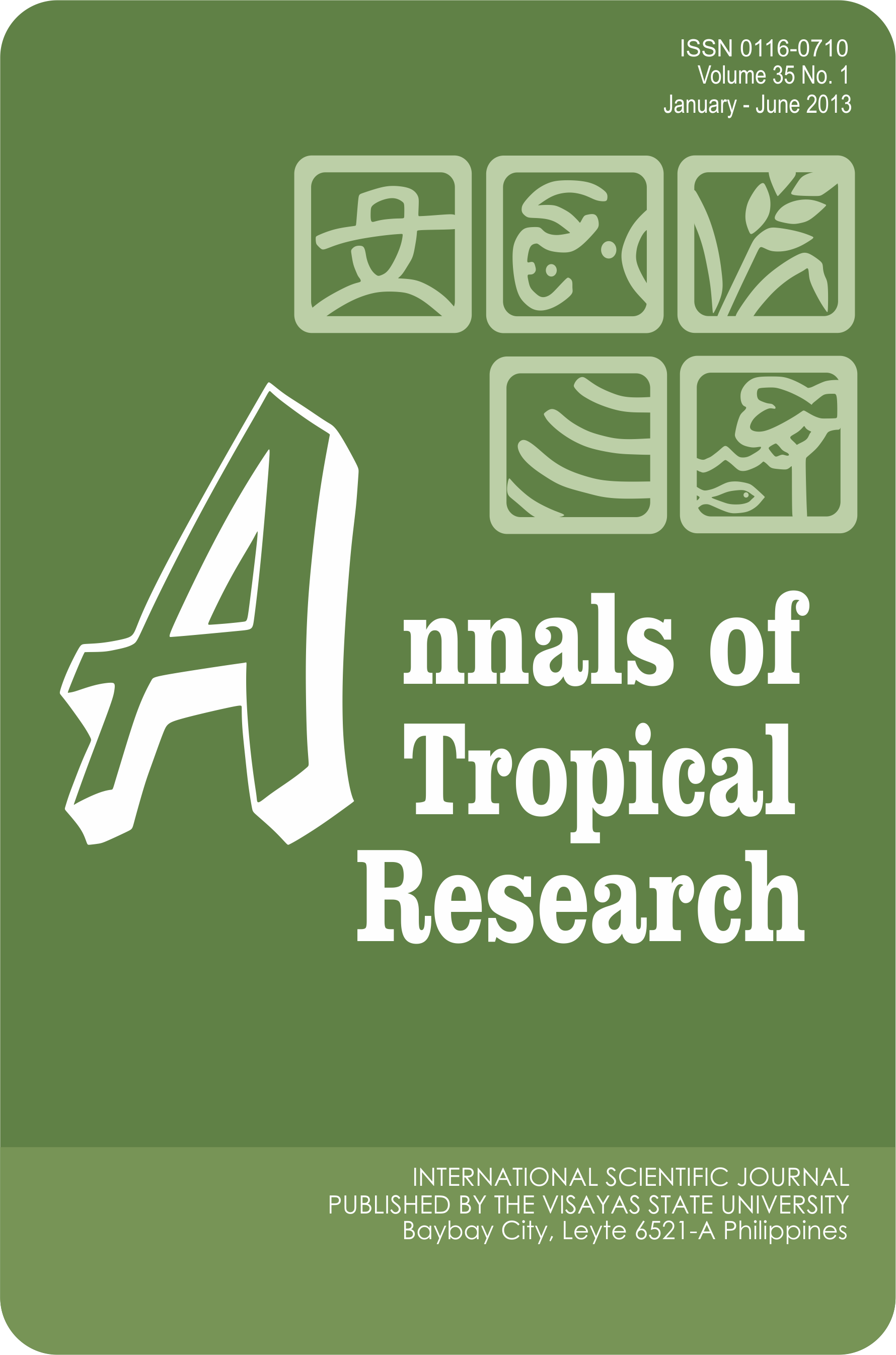Effects of Chitosan Isolated from Crab Exoskeleton on Postharvest Stem-end Rot Disease and on the Quality of Mango Fruit
DOI:
https://doi.org/10.32945/atr3513.2013Keywords:
Biopesticide, chitosan, Colletotrichum gloeosporioides, Diplodia natalensisAbstract
Natural products for disease control and quality enhancement of fruit after harvest are increasingly used as alternative to chemical pesticides which are hazardous to human health and the environment. This study was conducted to extract chitosan from crab processing waste and compare its effect with commercial chitosan (Sigma) on stem-end rot disease and on the quality of carabao mango fruit. FT-IR spectra exhibited characteristic absorption bands of the amides, the amines and the carbonyl occurring as prominent and sharp peaks in both laboratory-produced and the commercial chitosan. In vitro assay of D. natalenses chitosan showed comparable inhibitory effect on fungal growth and development with that of Dithane (‘mancozeb’). When the extracted and commercial chitosan were dissolved in 2% acetic acid and applied at 0-500 ppm, it was found that chitosan regardless of source and concentration can reduce weight loss in mango during storage. Dipping the fruits at different chitosan concentrations significantly reduced the infection rate of stem-end rot disease. The infection rate in fruits treated with 100 ppm laboratory-produced chitosan was comparable with that of 500 ppm Sigma chitosan. The results of this study suggest that the laboratory-produced chitosan at 100 ppm is comparable with that of Sigma chitosan as they significantly slowed down the infection rate of stem end rot disease caused by D. natalensis. Chitosan’s antimicrobial action and beneficial effects on fruit quality could have farreaching application in the fresh fruit industry.
Downloads
Submitted
Published
How to Cite
Issue
Section
License

This work is licensed under a Creative Commons Attribution-NonCommercial-ShareAlike 4.0 International License.











